The recipe I’m about to present to you below is no joke. I’m actually quite excited to share it because it’s probably one of the tastiest things I’ve ever eaten. I can’t tell you how many times I said, “Mmmm. Hmmm. Oh that’s good. Mmmm.” as I was devouring what was on the plate in front of me. It’s good. Really good.
This recipe is number two, in a series of three, that I’ll be preparing from the Steaming & Poaching course at America’s Test Kitchen.
In my opinion, if I was going to prepare one of these recipes again, it would be this one. I’ve always enjoyed salmon much more than cod. In the world of fish, salmon certainly is where it’s at.
In this recipe, I used a technique called shallow poaching. It’s somewhat of an obscure technique that’s quite different than traditional poaching. Here’s a working definition:
“Shallow poaching is a popular method of cooking that is usually used with tender fish and poultry breasts. The food is placed on a bed of aromatic ingredients, then combined with a few ounces of flavorful liquid, covered loosely, and gently simmered until done. The cooking liquid becomes even more flavorful, and it is usually reduced and used as the basis for the accompanying sauce.”
I will tell you that more folks should be using this style of cooking in their kitchens. When I took my first bite of the salmon after I pulled the lid off the skillet, it melted in my mouth. The flavor of the salmon was fully intact and the aromatics truly brought the flavors to life. Honestly though, what brought this dish over the top was the vinaigrette. The honey, combined with all those herbs! I’ve never tasted something like that alongside salmon. Incredible.
In my last post, I remember mentioning a good dish for a date night. This is the one. There’s no garlic and half of the shallots are boiled down so they’re very tender. The other half – the fresh ones – are mild enough that you don’t even notice you’re eating them. What works wonders is the fresh parsley, the tarragon and the honey. So if you’re looking for a nice recipe to keep in your back pocket for a special occasion, be sure to bookmark this page.
Below, I’ll cover what you’ll need to complete this recipe and then I’ll talk about the steps involved in making it.
Ingredients
Serves: 4
2 Large Lemons
Fresh Parsley
Fresh Tarragon (I used dried)
2 Shallots
1/2 Cup Dry White Wine (I used Pinot Grigio)
1/2 Cup Water
1 Large Skinless Salmon Fillet (2 Pounds)
2 Tablespoons Capers
1 Tablespoon Honey
2 Tablespoons Extra-Virgin Olive Oil
Regular Table Salt
Ground Black Pepper
Step-by-Step Instructions
The first few steps are prep work. You can do these at your leisure because all of the cooking is at the end.
Chop Parsley
I started off with about 5 large stalks of parsley. I felt like it would eventually be enough to fill the 2 tablespoons the recipe recommended.
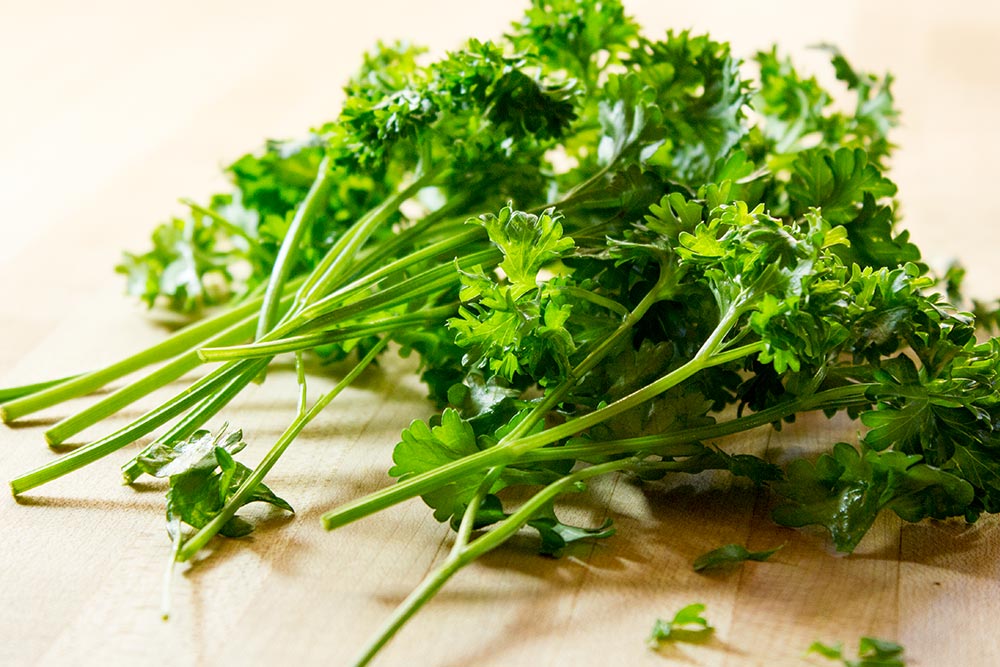
I’ll be honest with you when I say that I generally overdo it when it comes to parsley. I’m not sure there can be “too much.” For the recipes I post on this site, I tell you what the original recipe wants, but behind the scenes, I always add more. If you’re a parsley lover like I am, feel free to follow in my footsteps.
I chopped up what I had and kept the stems for later use.
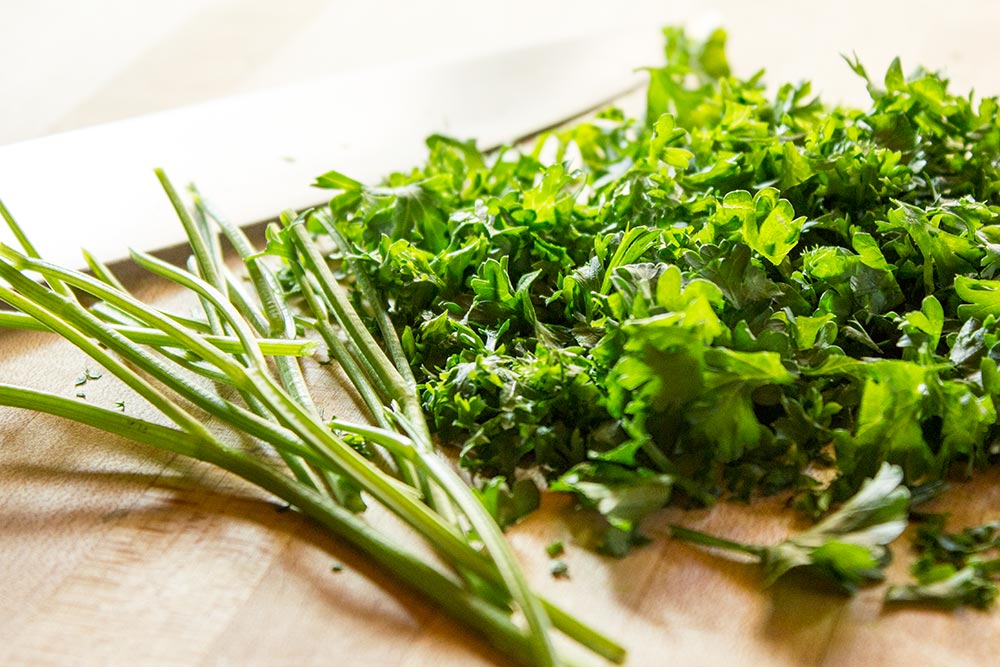
Chop Tarragon
Do the exact same thing for the tarragon. You should chop enough, again, for 2 tablespoons. My local grocery store didn’t have any fresh tarragon on hand, so I used dried. Remember though, there is a rule to follow here:
Fresh Herb vs. Dry Herb Conversion
One teaspoon of dried herb is equal to one tablespoon of fresh herb.
Mince Shallots
This may be the very first time I’ve ever eaten shallots. Well, I may have eaten them, but I’m sure I’ve never purchased them. My conclusion is that they’re nice. The flavor is subtle and quite enjoyable. I may start including them in my recipes more.
I minced the shallots until they reached about 4 tablespoons, give or take.
Cut Salmon
Since the salmon I purchased came with skin, I had to fillet it off. Good thing I have some seriously sharp knives. Once I had the skin off, I cut the large piece into smaller ones. If you have the suggested 2 pound skinless fillet, go ahead and cut it into 4 even pieces.
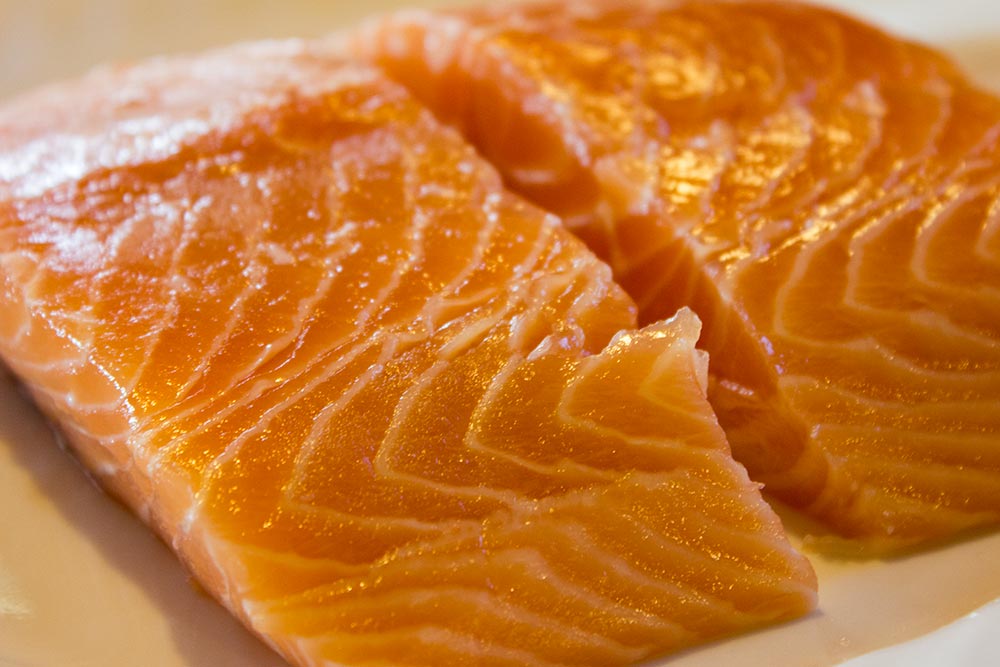
Rinse & Chop Capers
When it comes to salmon, capers are a definite go-to ingredient. For this step, I rinsed 2 tablespoons of capers and then chopped them up. I didn’t go nuts here. I basically chopped the group of them enough so they were halves, on average.
Trim, Slice & Wedge Lemon
The first lemon will be used, as slices, to lay flat along the bottom of the skillet. Because of this, it’s important to first trim both ends off it.
After I trimmed the lemon, I cut it into 8 even slices. I set them aside.
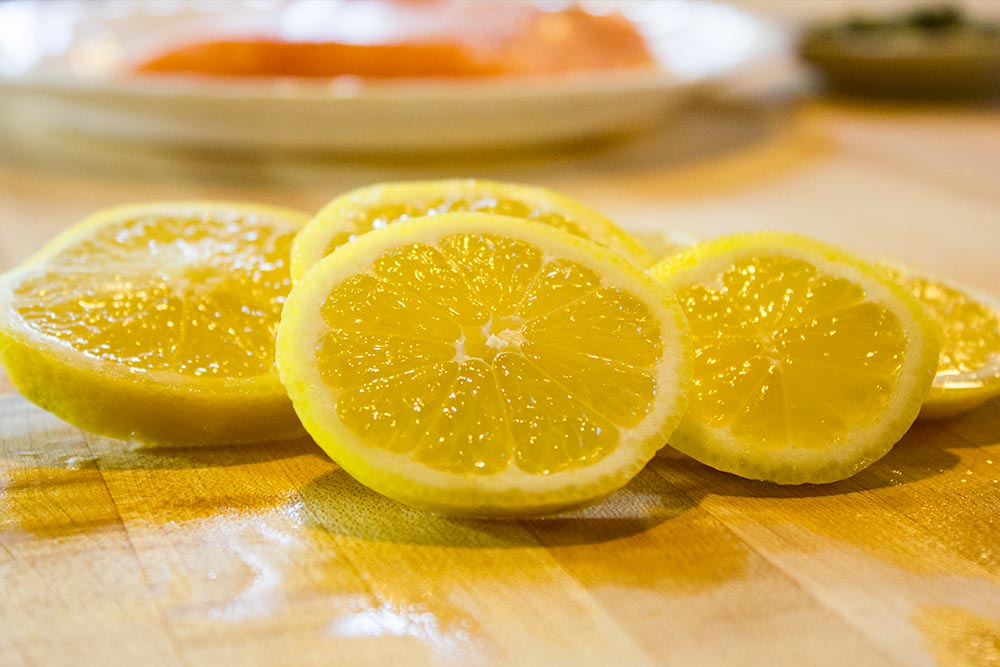
As for the other lemon, I cut that into 8 wedges and set it aside as well.
Place Lemon Slices in Skillet
Once all the lemon was sliced and wedged, I took the slices and placed them in a loose circle around the bottom of the skillet.

Please remember to remove and discard any seeds you find in the lemon before you take this step. Even though you’ll be straining what comes out of the skillet later, you don’t want any seeds to stick to the salmon and end up on your plate.
Add Herb Stems To Skillet
For this step, I added the parsley stems to the skillet, right on top of the lemons. If you have the tarragon stems as well, add them to the mix.
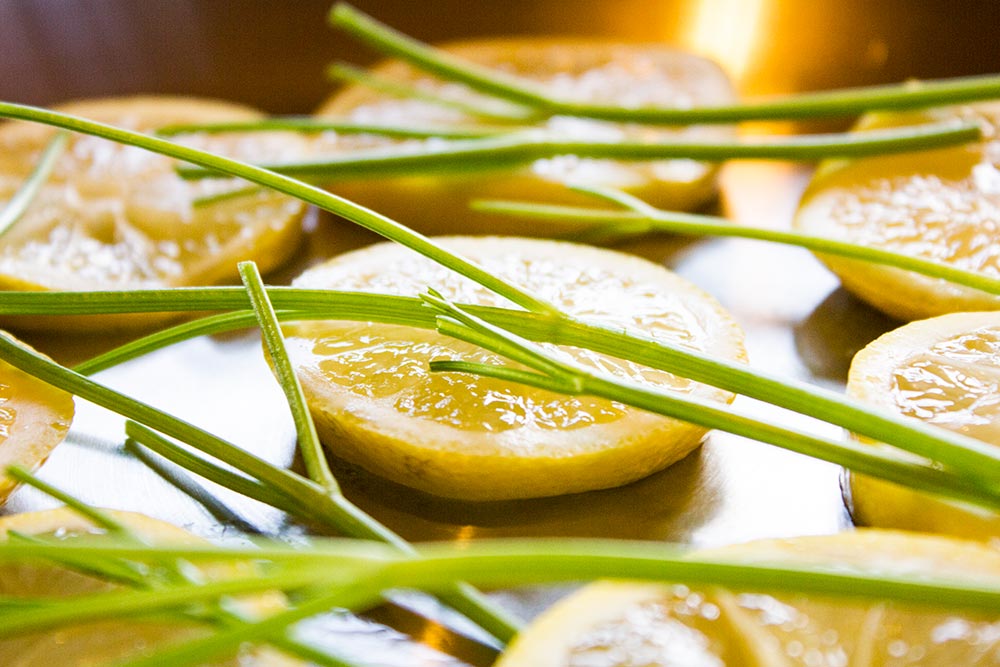
Add Minced Shallots To Skillet
I then added half, or 2 tablespoons, of the minced shallots right on top of the lemons and herb stems.
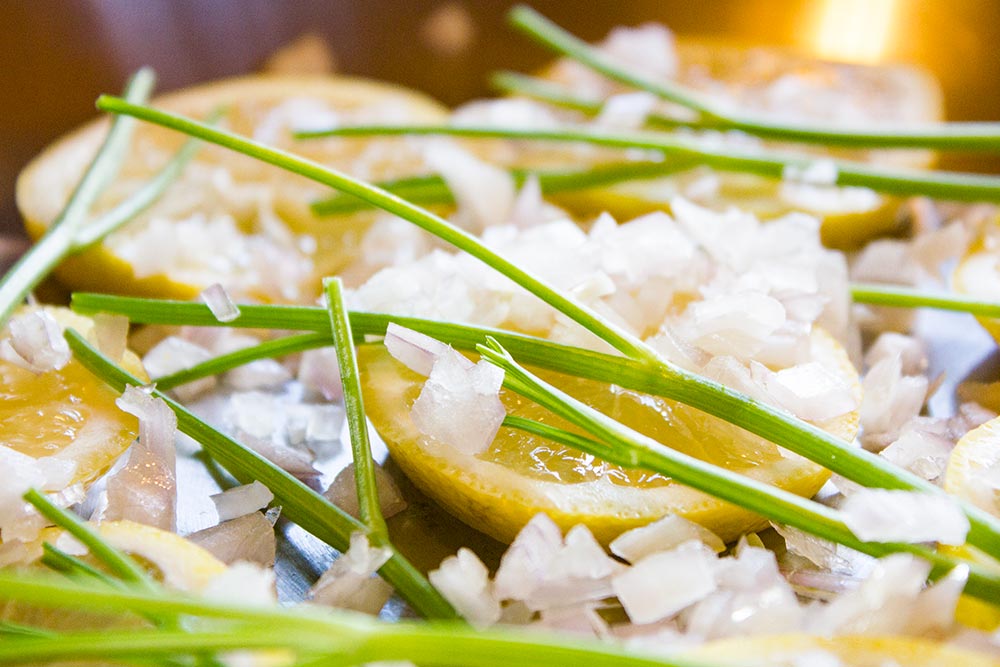
Add Water & Wine To Skillet
To finish things off, I added 1 cup of liquid to the skillet. It consisted of 1/2 cup of the dry white wine and 1/2 cup of water.
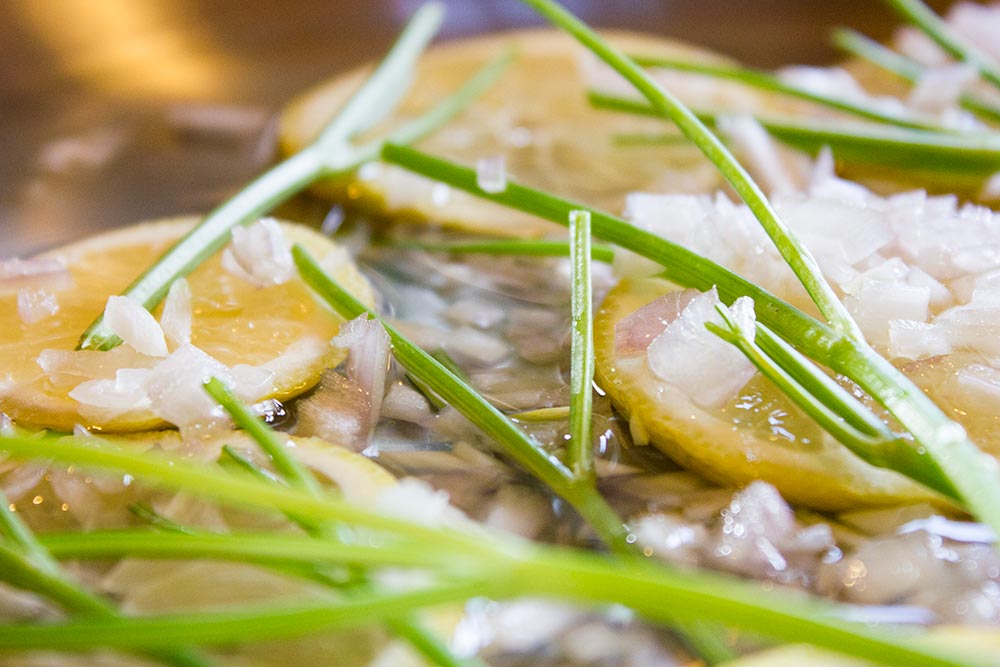
Look at those fresh ingredients!
Add Salmon To Skillet
Finally, I added the pieces of salmon to the skillet, right on top of everything.
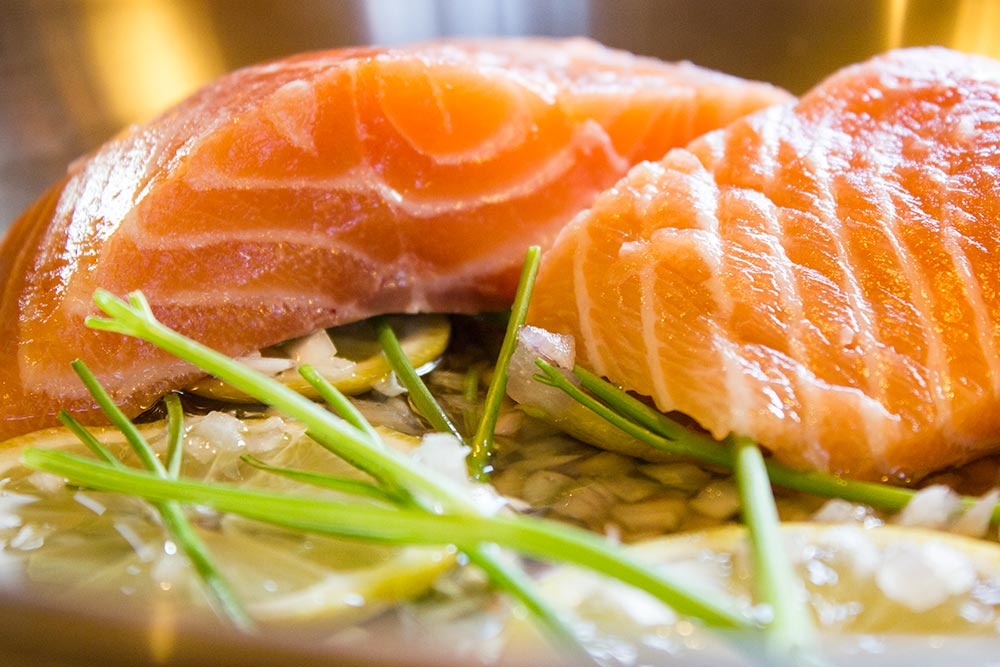
I’m sure you can imagine what kind of flavor is going to develop once this starts cooking.
Bring Liquid in Skillet To a Boil & Cover
At this point, I added high heat to the skillet and brought the liquid inside of it to a boil. Right as soon as it began boiling, I turned the heat down to low and covered the pan.
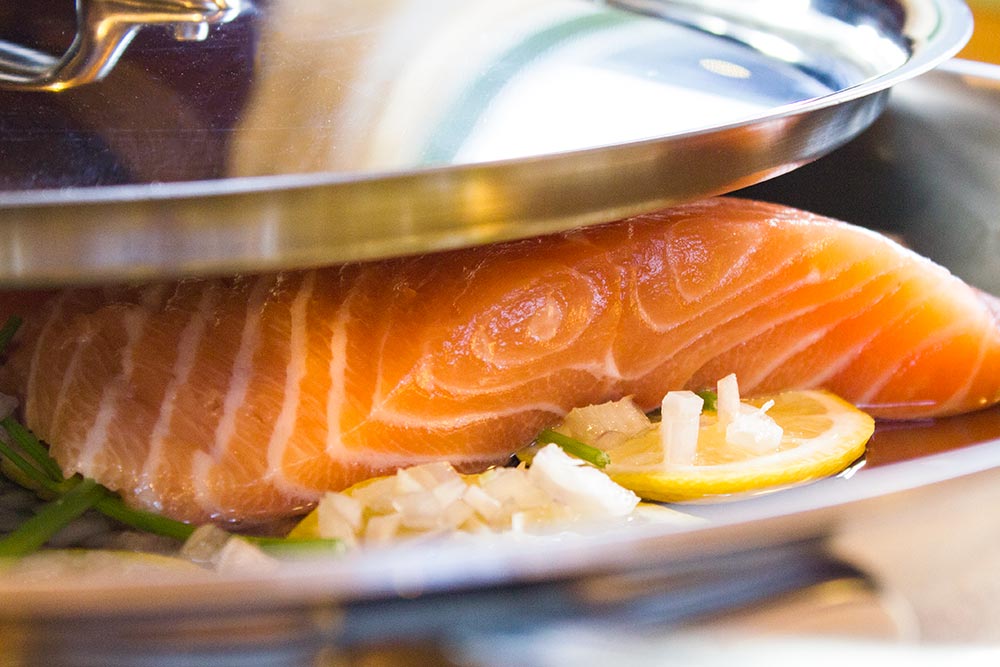
Simmer For 11 Minutes
The range here is anywhere from 10 to 14 minutes. You don’t want to end up with raw salmon, but you really don’t want to end up with dry. I cooked the salmon for exactly 11 minutes and mine came out perfect. Once it was finished, I removed the skillet from the heat.
Plate & Season the Salmon
Right after I removed the skillet from the heat, I plated the salmon and the lemon, including the herb stems. I basically transferred everything right from the pan onto plates, just the way it was.
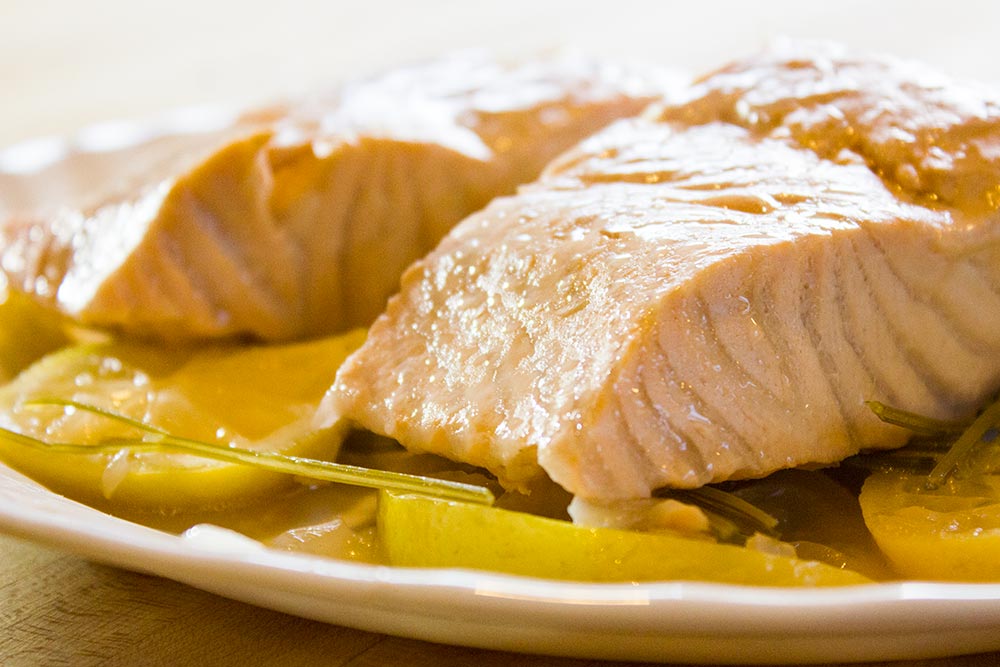
I then seasoned the salmon with salt and pepper.
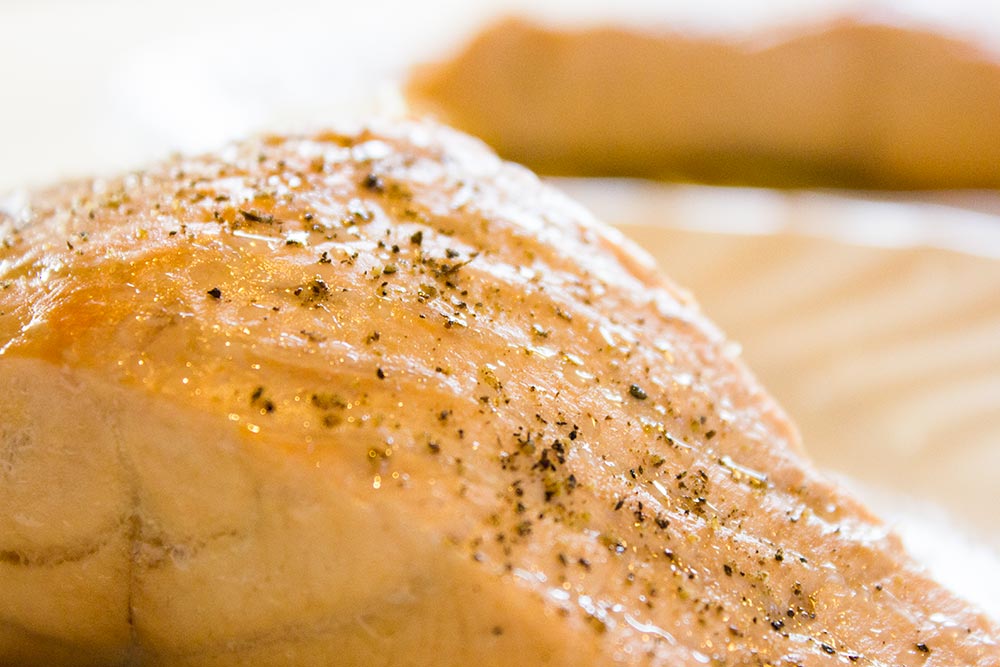
Make Sauce
Since there was still liquid in the bottom of the skillet, I returned it to high heat for 3-5 minutes. I wanted to boil it down to just a few tablespoons.
Prepare Vinaigrette
In a bowl, I combined the chopped parsley, the 2 teaspoons dried tarragon, the remaining shallots, all of the chopped capers, 1 tablespoon of honey and 2 tablespoons of extra-virgin olive oil.
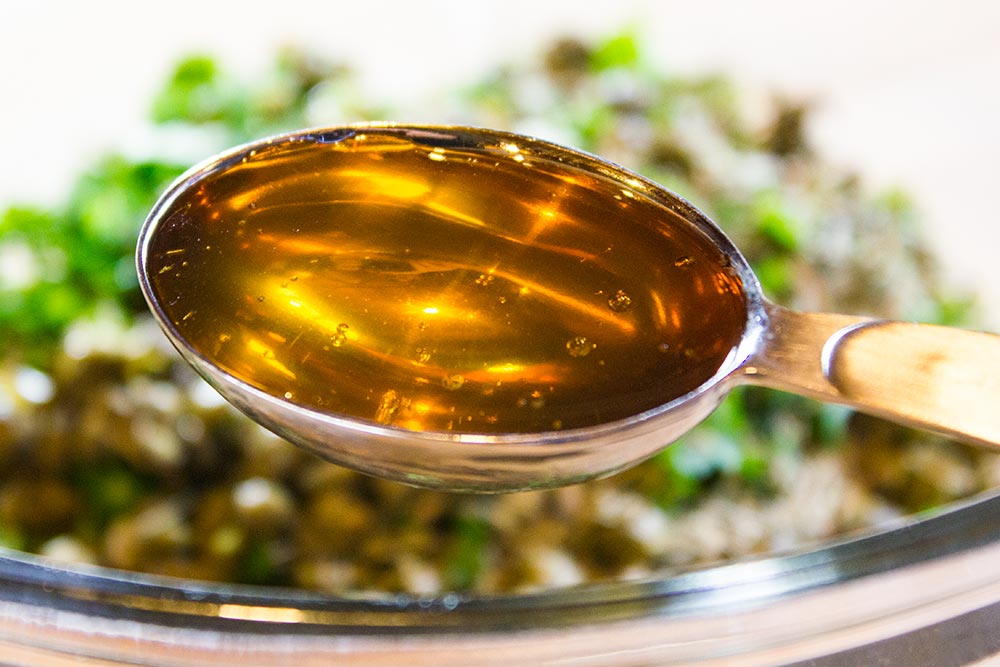
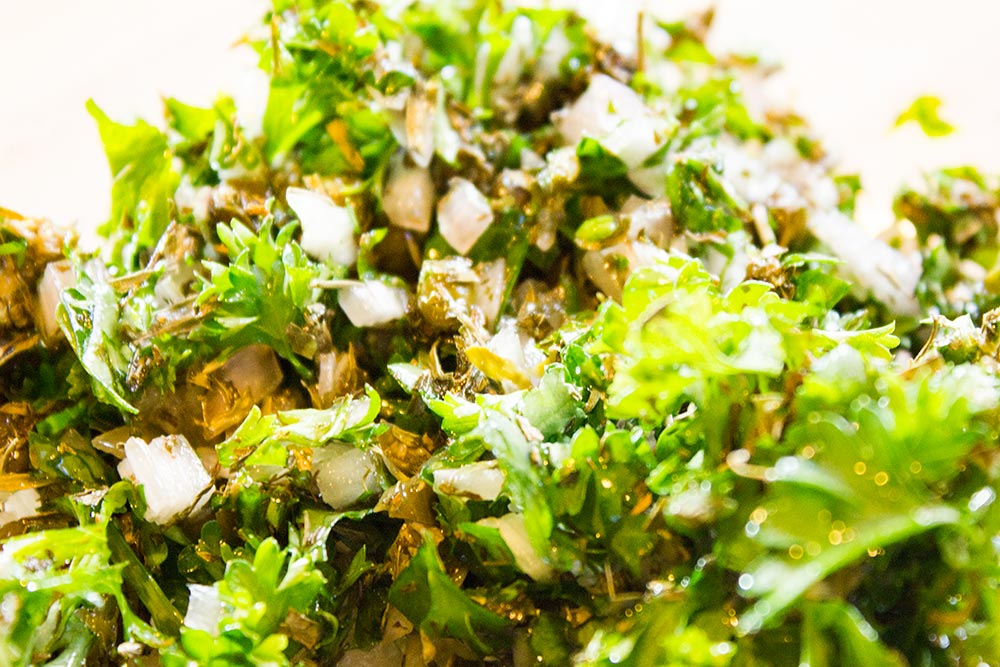
I also strained the reduction sauce from the skillet through a sieve, right into the same bowl. Finally, I stirred all these ingredients together and added the proper portions to the tops of the pieces of salmon.
The Final Product
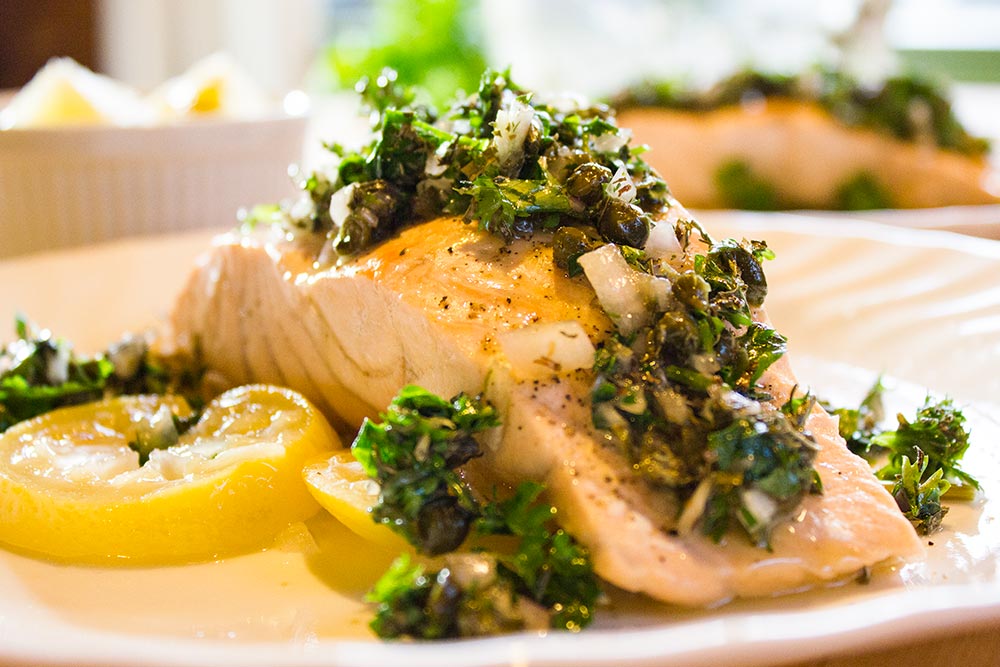
Absolutely delicious.
If you’ve enjoyed today’s post and found it helpful, please share it with a friend. Thanks!

This dish uses some of my favorite ingredients! Great photos, it really looks as delicious as you describe. I’m not sure I’ve ever intentionally used this technique to make fish. I need to try it!
You should definitely give this one a shot. It’s awesome. If you do, please report back with how it goes and what you think of it!
I love poached salmon and this looks like a great version. Nice post.
Thanks for the comment! This really is a delicious recipe. Since you like poached salmon, you’ve gotta check this one out. It’s worth it.
Can’t wait to try this recipe out! Never tried cooking salmon in a skillet but now having seen these pics I’ve got to give it a try!
I can tell you that this is probably one of my favorite recipes, and I’m not just saying that. The vinaigrette is to die for and the lemon adds so much to the entire dish. I’m actually thinking about making it again this week. If you do decide to have a go at it, please let me know what you think.